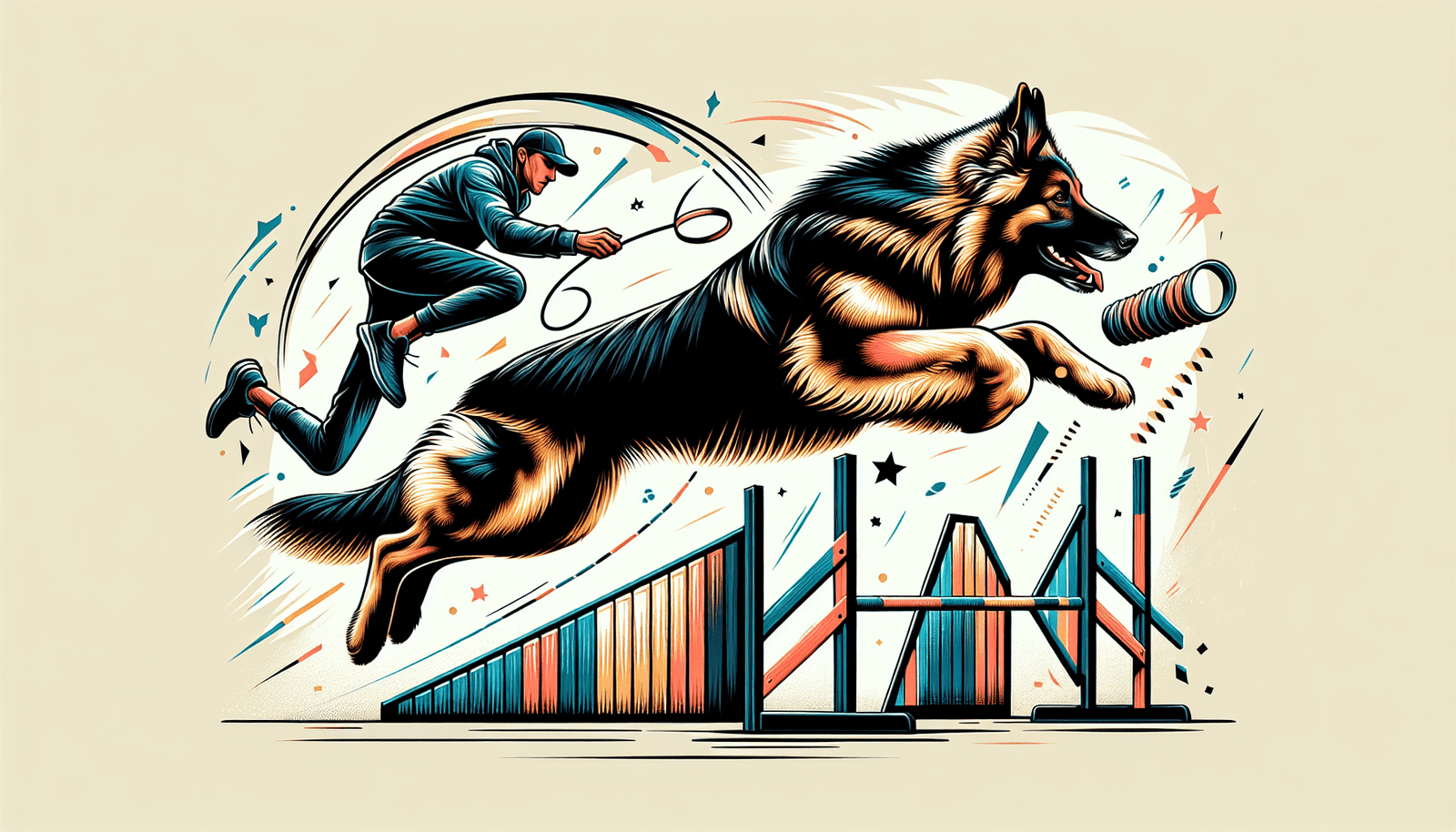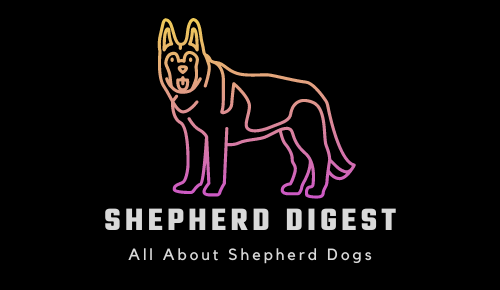If you have the privilege of training a magnificent King Shepherd, you may find yourself wondering about the ideal frequency for agility training sessions. You want to ensure your furry companion reaches their full potential, but you also want to avoid overwhelming them. In this article, we will explore the best approach to agility training with a King Shepherd, allowing you to strike the perfect balance between challenge and enjoyment for your loyal companion.

Factors to Consider
Age of the Dog
When deciding on the frequency of agility training sessions for your King Shepherd, it is crucial to consider their age. Puppies have developing bones and muscles that need time to grow and strengthen, so it is recommended to wait until they are at least one year old before introducing them to agility training. Older dogs may have certain limitations due to age-related factors such as joint stiffness or arthritis, so their training sessions should be adjusted accordingly.
Physical Ability of the Dog
Another important factor to consider is the physical ability of your King Shepherd. Every dog is different in terms of their stamina, strength, and overall fitness level. Some dogs may naturally excel in agility training, while others may require more time and effort to build up their physical abilities. Assessing your dog’s current physical condition will help you tailor their training program to ensure it is both challenging and safe for them.
Importance of Agility Training
Enhances Physical Fitness
Agility training offers a range of physical benefits for your King Shepherd. By engaging in obstacle courses, jumps, tunnels, and weave poles, your dog will develop better endurance, strength, and flexibility. These exercises help to improve their cardiovascular health, muscle tone, and overall physical fitness. Additionally, agility training can aid in weight management, as it provides a fun and engaging way for your dog to burn off excess energy and calories.
Promotes Mental Stimulation
In addition to the physical benefits, agility training is an excellent way to provide mental stimulation for your King Shepherd. The various obstacles and challenges in an agility course require your dog to think on their feet, problem-solve, and make quick decisions. This mental exercise can help prevent boredom and destructive behaviors, as well as improve their focus and overall cognitive function.
Builds a Stronger Bond
Engaging in agility training with your King Shepherd can strengthen your bond and enhance your relationship. Training together requires teamwork, communication, and trust. As you guide your dog through the course, you will both learn to understand each other’s cues and body language. This shared experience builds trust and deepens the bond between you and your furry companion, leading to a stronger and more fulfilling relationship.
Training Goals
Develop Coordination and Balance
One of the primary goals of agility training is to develop your King Shepherd’s coordination and balance. As they navigate through various obstacles, their body awareness and ability to control their movements will improve. This increased coordination and balance are not only beneficial for agility training but also translate into their everyday activities, making them more agile and less prone to injuries.
Improve Speed and Agility
Agility training is designed to enhance your dog’s speed and agility. By practicing quick turns, jumps, and weaving through poles, your King Shepherd will learn to move swiftly and efficiently. This improved speed and agility can have practical applications, such as being able to catch a frisbee or navigate obstacles during outdoor adventures. Furthermore, the increased agility can also help in preventing accidents and injuries by allowing your dog to respond quickly and avoid potential hazards.
Enhance Problem-Solving Skills
Agility training presents your King Shepherd with various challenges that require problem-solving skills. They need to figure out the best route through obstacles, judge the timing of jumps, and adapt their strategy on the spot. This type of problem-solving helps to sharpen their cognitive abilities, improve decision-making skills, and enhance their ability to assess and react to different situations. These skills are not only useful in agility training but also contribute to a well-rounded and intuitive dog.
Training Intensity
Frequency
The frequency of agility training sessions plays a crucial role in your King Shepherd’s progress and overall well-being. Consistent training sessions allow your dog to build and maintain their physical and mental abilities. However, it is important to find the right balance between adequate training and avoiding overexertion or burnout. Assess your dog’s fitness level and consider their age and daily activities when determining the frequency of training sessions.
Duration
The duration of each agility training session is another factor to consider. As with any form of exercise, it is important to start gradually and increase the duration over time. For beginners or dogs with lower fitness levels, shorter sessions of 10-15 minutes may be a good starting point. As your dog’s endurance improves, you can gradually increase the duration of each session, aiming for 30-45 minutes.

Recommended Frequency
Twice a Week
For most King Shepherds, starting with two training sessions per week is a good baseline. This frequency allows for adequate rest and recovery between sessions while still providing enough consistency to make progress. It is important to monitor your dog’s response to the training and adjust the frequency accordingly. Some dogs may thrive with more frequent sessions, while others may benefit from additional rest days.
Three Times a Week
For dogs with higher fitness levels or more experience in agility training, three sessions per week may be appropriate. This increased frequency can help maintain and further enhance their physical abilities and mental stimulation. However, it is crucial to closely monitor your dog’s well-being and adjust the intensity or frequency if signs of overtraining or fatigue occur.
Every Other Day
Another option is to train your King Shepherd every other day. This frequency provides consistency and allows for adequate rest days in between sessions. This training schedule can be particularly beneficial for dogs that require more time to recover between workouts or have limitations due to age or health conditions.
Recovery and Rest Days
Importance of Rest
Rest and recovery are essential components of any training program, including agility training. Just like humans, dogs need time to rest and repair their muscles after intense physical activity. Rest days allow your King Shepherd’s body to recover, rebuild, and adapt to the training stimulus. Without sufficient rest, your dog may be at an increased risk of fatigue, injuries, or decreased performance.
Signs of Overtraining
It is important to be vigilant for signs of overtraining in your King Shepherd. Symptoms may include decreased appetite, lethargy, reluctance to participate in training, decreased performance, and changes in behavior. If you observe any of these signs, it is crucial to give your dog adequate rest and consult with a veterinarian if symptoms persist or worsen.
Individual Variation
Every dog is unique, and there is no one-size-fits-all approach to training frequency and rest days. Pay close attention to your King Shepherd’s response to training sessions and adjust the frequency and intensity accordingly. Some dogs may require more frequent rest days, while others may thrive with higher training frequencies. It is important to strike a balance that enables your dog to make progress while prioritizing their well-being and long-term health.
Training Techniques
Warm-Up and Cool-Down
Before starting any agility training session, it is essential to warm up your King Shepherd’s muscles and prepare them for exercise. A warm-up routine can include gentle stretches, light jogging, and dynamic movements to increase blood flow and warm up the muscles. Similarly, cooling down at the end of each session with a few minutes of low-intensity exercise and stretching can help prevent muscle soreness and improve recovery.
Progressive Difficulty
To ensure continuous progress, it is important to gradually increase the difficulty of the agility exercises. Start with easier obstacles and gradually introduce more challenging elements as your King Shepherd becomes more comfortable and confident. This progressive approach helps prevent injuries and keeps training sessions engaging and stimulating for your dog.
Varied Exercises
To provide a well-rounded training experience, it is important to incorporate a variety of exercises and obstacles into your King Shepherd’s agility training. This variety helps prevent boredom, promotes overall physical development, and allows your dog to work on different skills and abilities. Mix up jumps, tunnels, weave poles, and other obstacles to keep the training sessions fresh and enjoyable for both you and your dog.
Training Environment
Indoor Agility Equipment
Indoor agility equipment provides a convenient and controlled environment for training sessions with your King Shepherd. It allows you to set up obstacle courses based on your dog’s abilities and training goals while minimizing external distractions. Indoor agility equipment includes jumps, tunnels, weave poles, and other agility-specific tools designed to simulate real-life agility courses.
Outdoor Obstacle Course
Training your King Shepherd in an outdoor environment can offer additional challenges and benefits. Natural elements such as uneven terrain, varying weather conditions, and different scents provide a more stimulating and realistic training experience. Outdoor obstacle courses can be set up in your backyard or local parks, utilizing natural or homemade objects such as fallen logs, tree stumps, or elevated platforms to provide a diverse and engaging training environment.
Professional Guidance
Consulting a Trainer
If you are new to agility training or want to improve your King Shepherd’s skills and performance, consulting a professional trainer can be invaluable. An experienced agility trainer can assess your dog’s needs, develop a tailored training plan, and provide guidance on technique, training progressions, and safety protocols. They can also offer valuable insights and tips to improve your training experience and maximize your dog’s potential.
Seeking Veterinary Advice
Before starting any agility training program, it is important to consult with a veterinarian, especially if your King Shepherd has any underlying health conditions or physical limitations. A veterinarian can assess your dog’s overall health, provide recommendations to tailor their training to their specific needs, and address any concerns you may have about potential risks or impacts of agility training on their well-being.
Alternatives to Agility Training
Swimming
Swimming is an excellent low-impact alternative to agility training for King Shepherds. It provides a full-body workout, improves cardiovascular fitness, and builds muscle strength without putting excessive strain on your dog’s joints. Swimming is particularly beneficial for dogs with joint issues or those recovering from injuries, as the buoyancy of the water helps reduce stress on their bodies.
Brisk Walks
Brisk walks are a simple yet effective way to keep your King Shepherd physically active and mentally stimulated. Regular walks provide cardiovascular exercise, help maintain an ideal body weight, and offer opportunities for your dog to explore new environments and engage their senses. Vary the pace, duration, and routes of your walks to provide additional mental and physical stimulation.
Mental Puzzles
Engaging your King Shepherd in mental puzzles and interactive toys can provide an alternative form of mental stimulation. Puzzle toys, treat dispensers, and interactive games require your dog to use problem-solving skills and keep their minds engaged. These activities can be used as a supplement to agility training or on days when your dog needs a break from physical exercise.
Agility training offers a wide range of benefits for your King Shepherd, both physically and mentally. With careful consideration of factors such as age and physical ability, you can tailor a training program that suits your dog’s needs. By focusing on goals such as coordination, speed, and problem-solving skills, and following recommended frequencies and techniques, you can ensure your King Shepherd receives the right balance of training and rest. Remember to always consult with professionals and monitor your dog’s well-being throughout their agility training journey.

